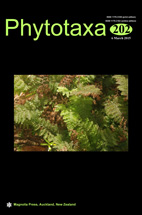Abstract
Agaricus is a genus of macrofungi containing species with high edible and medicinal values. A survey of Agaricus species carried out around the Ebinur Lake, in Xinjiang Province of China, in 2012, yielded 19 collections that exhibited a red discolouration when bruised. Morphological and phylogenetic comparison with species of five sections of Agaricus possessing the red discolouration trait showed that the specimens belonged to four species. Two species, A. sinodeliciosus sp. nov. and A. bitorquis in section Bivelares and A. desjardinii sp. nov. and A. padanus in section Nigrobrunnescentes, both sections being monophyletic. The two new species proposed are described and illustrated and all species are compared with similar taxa or previous records. Agaricus padanus is reported outside Italy for the first time. All species are edible and consumed by locals, and appear to be adapted to relatively dry, cold and sandy habitats. Like A. bitorquis, A. sinodeliciosus produces large, delicious semihypogeous basidiomata in such conditions; it is therefore a good potential candidate for domestication and industrial production.

